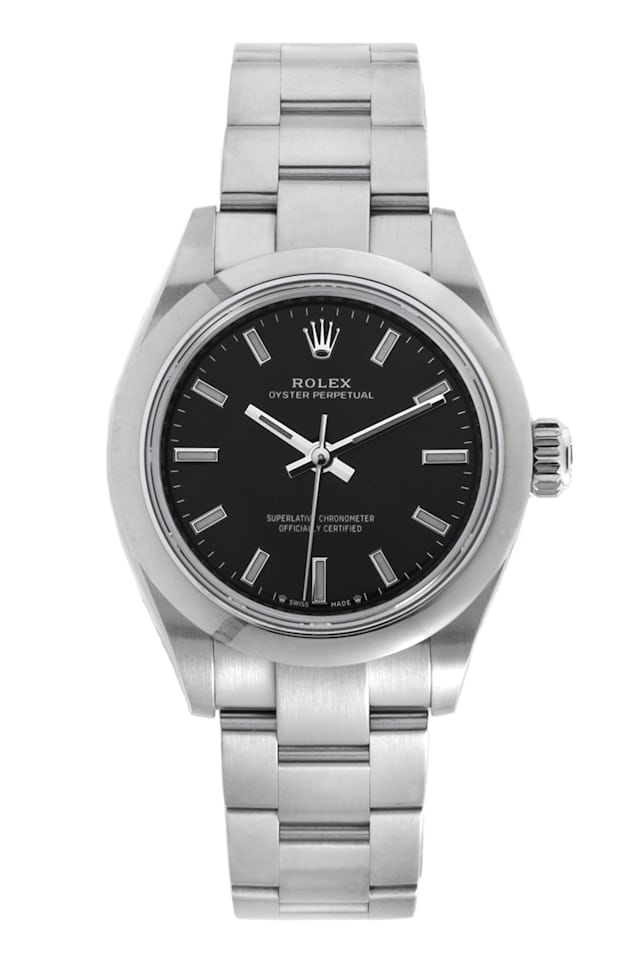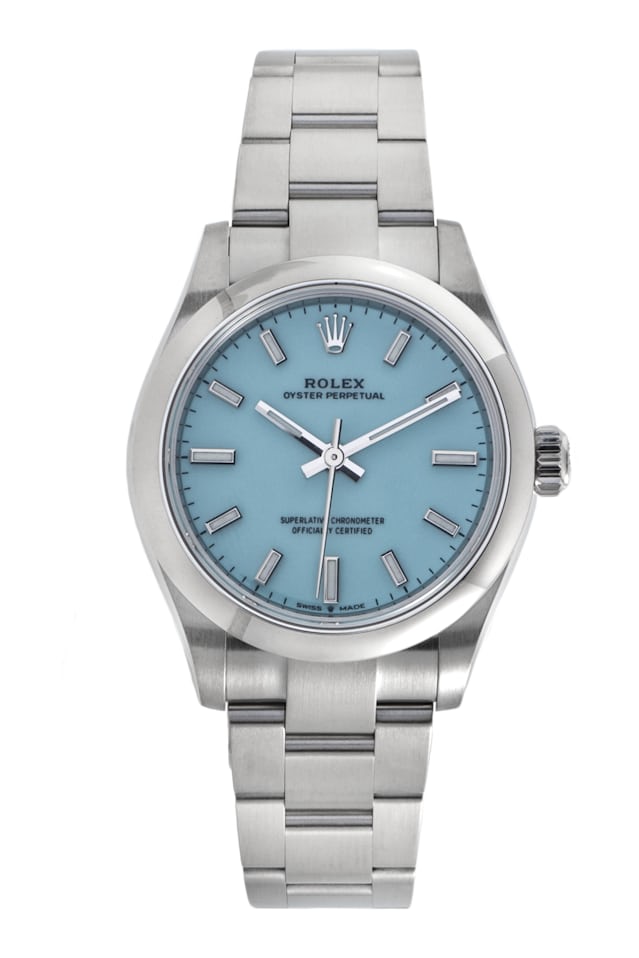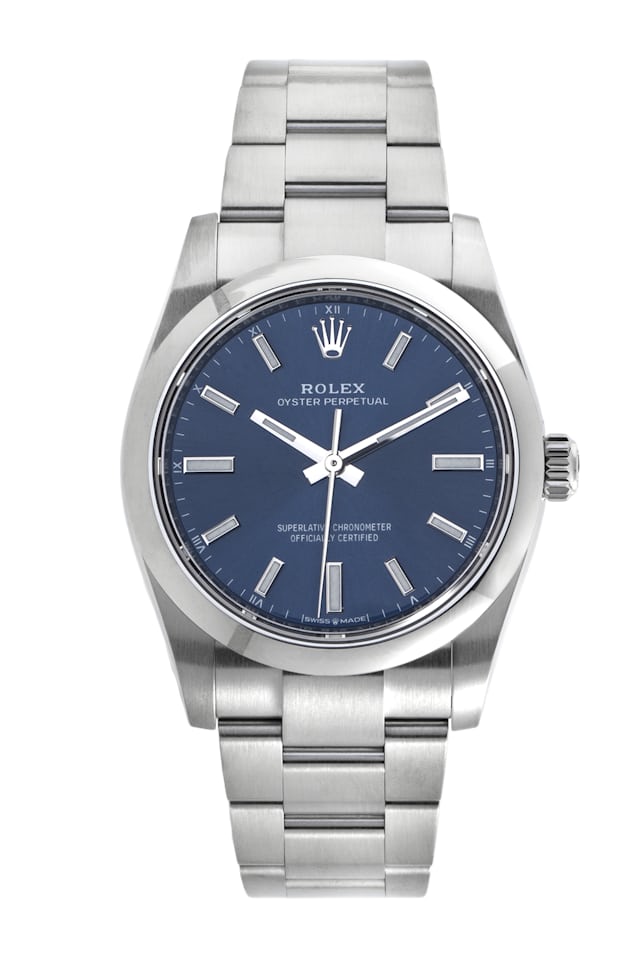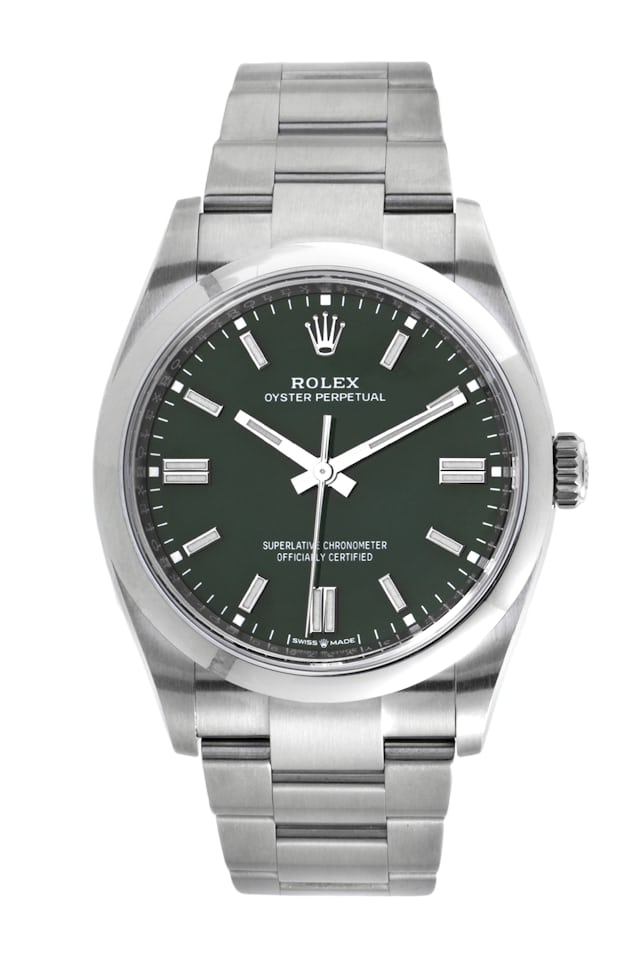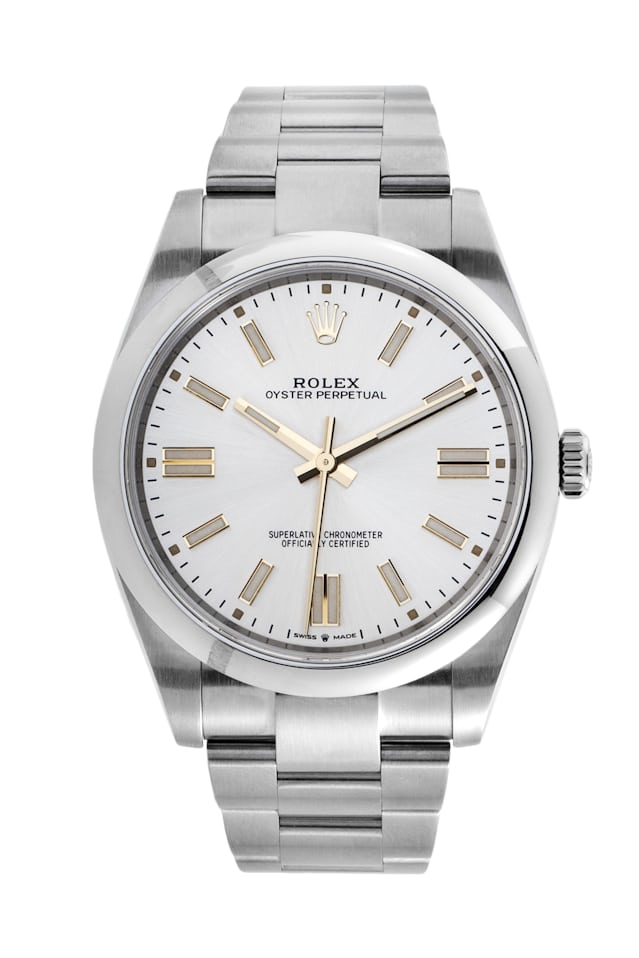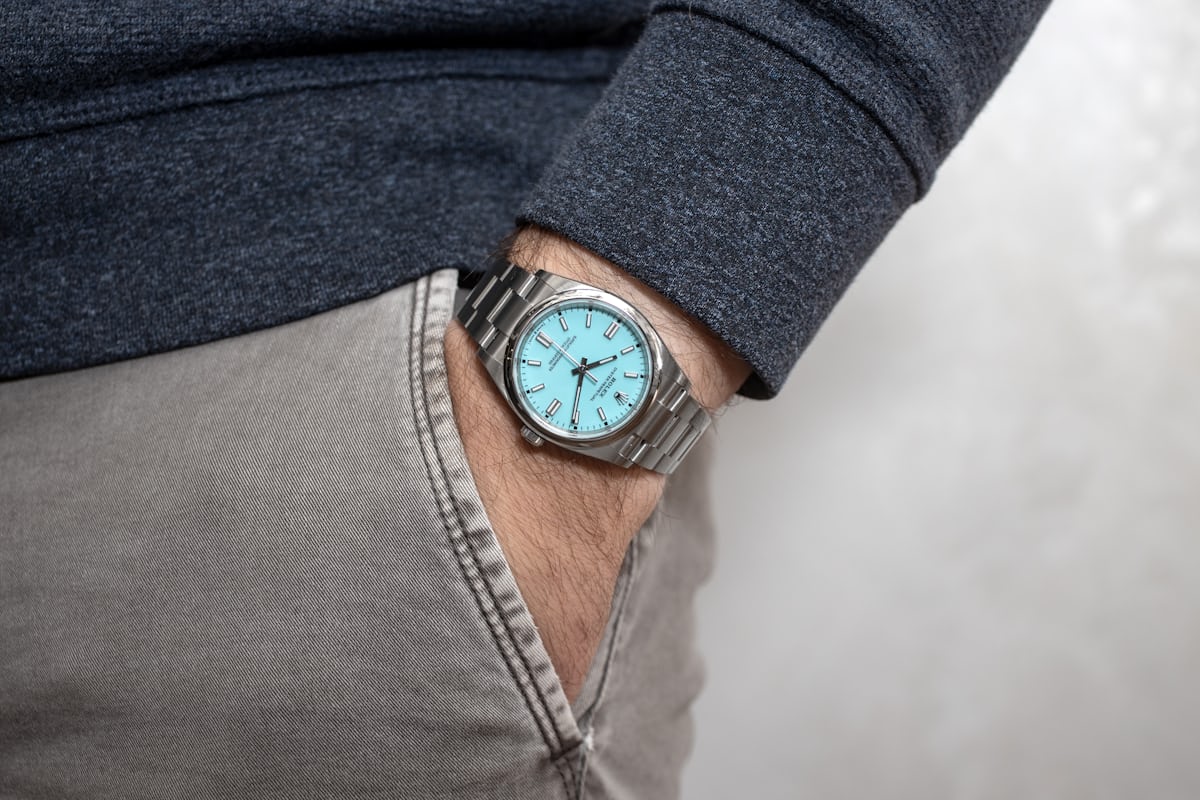In-Depth: Breaking Down All Five Sizes Of Rolex Oyster Perpetual
The candy-colored dials get all the attention. But each size has its own personality.
They’re the words printed on nearly every Rolex dial: “Oyster Perpetual.” Two seemingly innocuous combinations of letters that are not only historically significant, but that also neatly summarize everything that makes Rolex the horological powerhouse it is. The first waterproof watch case Rolex made was the “Oyster.” Perpetual refers to the perpetually winding rotor inside every Rolex watch. It’s why you never find the word “Automatic” on the dial – it would just be redundant.
At its core, the OP is quintessential Rolex. No functional bezels, no complications, no extraneous elements. This thing just tells time.
In late 2020, Rolex unleashed an onslaught of Oyster Perpetuals in a variety of colors and sizes. Notable were the – unofficially named – Stella-dial models (a reference to the rare pastel colors of 1970s-era Day-Dates). In a year that saw the release of a new Submariner, this had the watch world buzzing.
The new Oyster Perpetual lineup comes in five sizes: 28, 31, 34, 36, and 41mm. However, don’t think you’re getting the same set of watches in every size. This is Rolex we’re talking about – that would be too easy. Let’s break down the differences, and see what all the fuss is about.
Pour some out for those we lost
To get to this point, we had to lose some watches along the way – good ones that left it all out on the field. I’m speaking, of course, about the much-beloved Rolex OP 39, a watch (at least in its white-dial configuration) deemed to be near perfect. It was the exemplification of the Rolex ideal. It had a capability and a timelessness that defied its simplicity. We had it for all of two short years, only to see it blip out of existence as if by the gauntlet of Thanos.
An in-depth look at the differences between the discontinued OP 39 and the newly introduced OP 41.
With it, we also lost some of Rolex’s more playful dial options: The rhodium dial with blue markings, the red grape dial with pink markings, and the blue dial with green markings. Even the last generation 34mm OP model had a sleeper hit: The green dial variant with orange markings.
But, all good things come to an end. Most of the size options in the 2020 Oyster Perpetual collection have been revamped, while the 39mm model is discontinued altogether – replaced by the new 41mm variant.
What’s your size?
Within every size of the Oyster Perpetual collection, there are fine differences worth noting. The 36mm and 41mm variants are effectively mirror images of one another, just in different sizes with the painted squares situated alongside every hour marker. The OP 34 features Roman numerals on its dial – a feature unique to this size. The 31 comes in basically the same dial configuration as the 36 and 41, but varies in two ways. For one, there are no painted square markings. Instead, the watch has bolded hash marks at every five-minute interval (where every hour marker is). Secondly, it has single baton markers as opposed to double (but more on that in a moment). The 28mm OP brings a different look with no hashmarks at the hour marker positions.
The 31, 36, and 41mm models all have the Rolex coronet insignia in place of a hashmark at six o’clock on the dial. The 28mm model, on the other hand, has two Rolex coronets flanking the magic words Swiss and Made – a little callback to vintage models where the tritium “T” was presented similarly.
A key differentiator between the 36/41mm models and the rest is the style of the markers themselves. The former have what has come to be called the double-baton-style marker set, where the three, six, and nine o’clock markers are presented in a double-barrel style (literally two markers next to each other). This is something of a divisive topic for OP devotees. Lovers of the OP 39 lament this choice on the OP 41. Don’t like it? Buy another size.
All of the OP models, no matter the size, do share one dial characteristic. For years, Rolex manufactured its blue-chip watches with a (fittingly) blue luminous material called Chromalight, all the while continuing to produce the OP line with green Super-LumiNova. With this refresh, you’ll find the familiar blue glow has made its way onto the dials of all five size options – and it’s about time.
Bracelet upgrade alert
The OPs received a substantial upgrade to its bracelet technology across the board. In the past, the OP bracelet represented the minimum that Rolex could offer. Picking one up felt akin to holding a vintage or neo-vintage model – which wasn’t necessarily a bad thing. It just didn’t have that new-watch heft.
Now it does.
Every one of these watches now has a fully brushed Oystersteel bracelet equipped with Rolex’s patented Easylink extension system. The Easylink allows for quick adjustment of the bracelet in 5mm increments. A simple fold and click into the clasp shortens the bracelet for colder days and a quick unlatch lengthens it for warmer ones.
Flying colors
Here’s where things get potentially confusing. On the most basic level, the OP has two main dial colors: black, and silver with gold accents. The black dial is a known quantity, but the silver is really something new. Check out the interplay of the sunray silver finish with the gold accents in the surrounds and Rolex crown. The effect makes the watch a little bit sporty and a little bit dressy. In many ways, this dial configuration is the most OP, because it feels like a throwback.
After the black and silver, a ton of colors enter the fray. Picking one is like configuring a new car online. Every trim level has certain paint colors available. Some overlap, and others don’t. With every size variation, you’ll find slight changes to the available color options. To keep it all straight, you can split the colors into two different buckets.
For the purposes of this exercise, we’ll label the 28/34mm bucket the “Non-lacquer” dials. This is because the available color options here are all of the sunray variety: blue, black, pink (called rose), and silver.
Conversely, the 31/36/41mm variants fall into the “Lacquer” bucket. In addition to sunray options (which are available on these models), these watches pack real heat when it comes to color. We’re talking coral red, a deep yellow, turquoise blue, and green.
Getting back to the car analogy, there’s a certain lacquered candy-pink color only available on the OP 31 and 36.
These deep, colorful lacquer dials have everyone going bonkers. They represent the kind of Rolex playfulness akin to orange lightning bolt Milgauss seconds hands. Rolex is not a name synonymous with words like loose or fun – or at least, it didn’t used to be. But you wouldn’t know that just by looking at these dials.
Join a movement
And we’re back with more buckets. The new Rolex Oyster Perpetual falls into one of two movement categories. The 36/41mm models represent a giant leap in movement technology. Prior iterations of the OP 36 (and 39) models utilized movements dating back some 20 years. Much like sister-brand Tudor did when it transitioned to an in-house caliber, Rolex has significantly upgraded the movements in these two watches while only raising the prices marginally.
The OP 36/41 features the new Rolex in-house caliber 3230 – complete with the amagnetic Parachrom Balance Spring and Chronergy escapement with a 70-hour power reserve. This is the same movement you’ll find in the new Rolex Submariner. The Crown isn’t messing around.
It would be wrong to say that the other models (28/31/34) have a lesser movement inside. On the contrary; it is just different. These watches are powered by another in-house Rolex caliber: The 2232 which features, among other things, a silicon (known as Syloxi in Rolex parlance) balance spring.
I have devoted probably too much time to examining these two movements and trying to make sense of why Rolex manufactures them both in tandem. I’ll let you read that here. With this particular brand, it’s best not to ask questions like “why.” The long and short of it is this: Both movements are Rolex superlative chronometers (don’t believe me? Just read the dials), and boast similar antimagnetic properties. The key difference is the materials used in their construction and the power reserve (55 vs 70 hours), but both are more than worthy of wearing the crown.
Your model-by-model cheat sheet
The 28mm Oyster Perpetual falls into the Rolex women’s category. With this model, you’ll find a more limited dial color selection. It features single baton markers all the way around the dial with no other markings beyond hashmarks for the minute hands. The bracelet has Rolex’s Easylink extension system which is new to the OP line at large. It also features Chromalight luminescence, and the 2232 movement with Syloxi balance spring.
This is a curious watch. It’s sandwiched between the 28 and the 34mm variants and shares general dial features such as the single baton markers with these models. On the other hand, it shares the lacquer dial color options with the 36 and 41mm models. It also has something the 41mm model does not: that hot candy pink dial.
Those who fell in love with the white and black dial variants of the outgoing OP 39 will remember that the 34mm variants were essentially a smaller-sized echo of those watches. While Rolex technically lists this as a women’s model, there is really no more unisex a watch than the 34mm Oyster Perpetual. It has the same dial selection as the 28mm model. The recently discontinued version of the OP 34 had a nearly identical dial to that of the 39 including painted squares over each hour marker (a design flourish now present on the OP 36 and 41). Those squares have been replaced here by Roman numerals. While this makes the watch a bit more formal, and a little less fun, it is an interesting differentiator. Overall, this watch hasn’t changed much from its prior generation and maintains the single baton markers.
Speaking of markers, the OP 36 is the king of the double batons. Just like the OP 34, nothing about this watch’s general design language changed in 2020 other than the dial colors. But the 36mm is an interesting beast in that regard. It was something of a neglected child in the last generation. There was a white-dial model, but it was not the while dial found on the 34mm or 39mm variants. No, its dial was basically like a Datejust without the date, only with double baton markers at three, six, and nine o’clock. Well, the white dial is no more, making way for basically every other color there is.
The OP 41 is a new watch entirely. It is unprecedented, or, as Jerry Seinfeld once said to his pal George Constanza, “there’s no precedent, baby!” It follows the 36 in both form and function. Instead of continuing the dial aesthetic of the OP 34/39, Rolex opted for the same style as the 36 meaning – yep –double baton markers. Just like the OP 36, the new 41mm model comes in a rainbow of colors and has become a fan favorite.
What we have with this blitz of new OPs is something akin to a mid-cycle refresh of a car. No crazy changes to the body, but we get some fun new coats of paint, a slightly longer chassis, and an enhanced feature-set in essentially the same package we know and love.
This refresh, however, has managed to turn Rolex’s entry-level watch into a hot commodity of the highest order. Right now, on Instagram, you’ll find serious collectors flaunting their “Stella” OP the same way they would a white-dial Daytona or new Kermit Submariner. Some are even going the Pokemon route, trying to catch all of the colorful lacquered dials in a set.
And you can forget men’s or women’s watches when it comes to these models. Rolex can (and does) label them as gendered, but I’ve seen men confidently rocking the candy pink just as I’ve seen a woman with the green variant. These new OPs are a great indicator that countless buyers agree with Cara that everything should just be sold as unisex. Just choose your size and color.
Photos, Tiffany Wade
Get More Articles Like This in Your Inbox
We're constantly creating great content like this. So, why not get it delivered directly to your inbox? By subscribing you agree to our Privacy Policy but you can unsubscribe at any time.





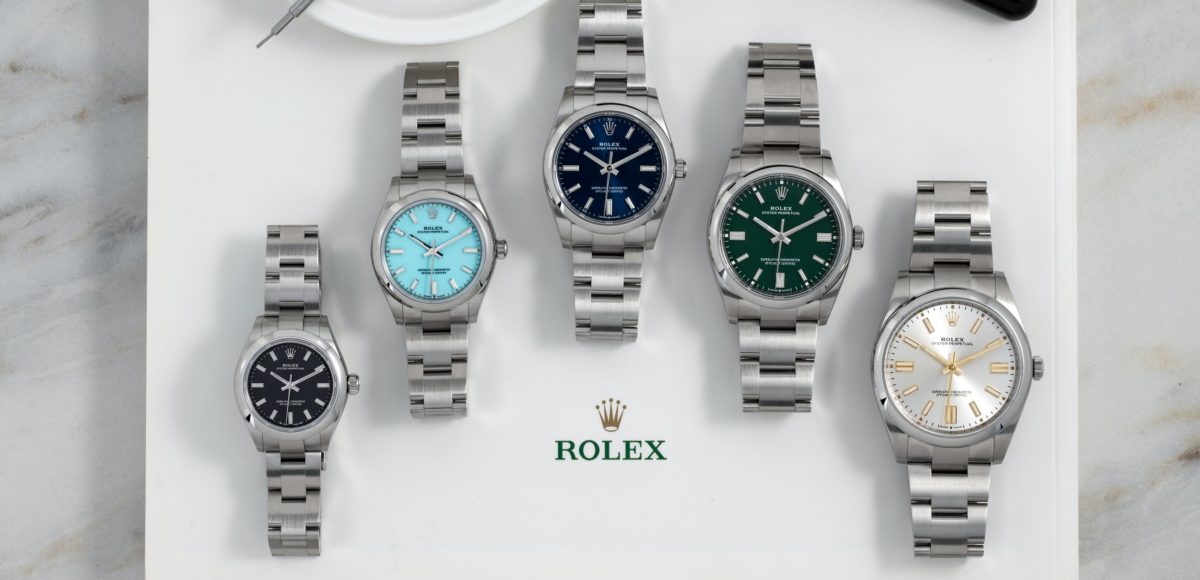
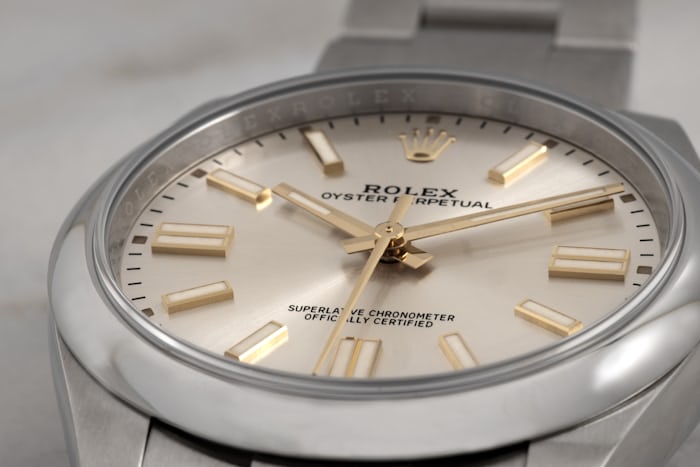

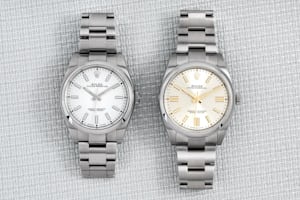
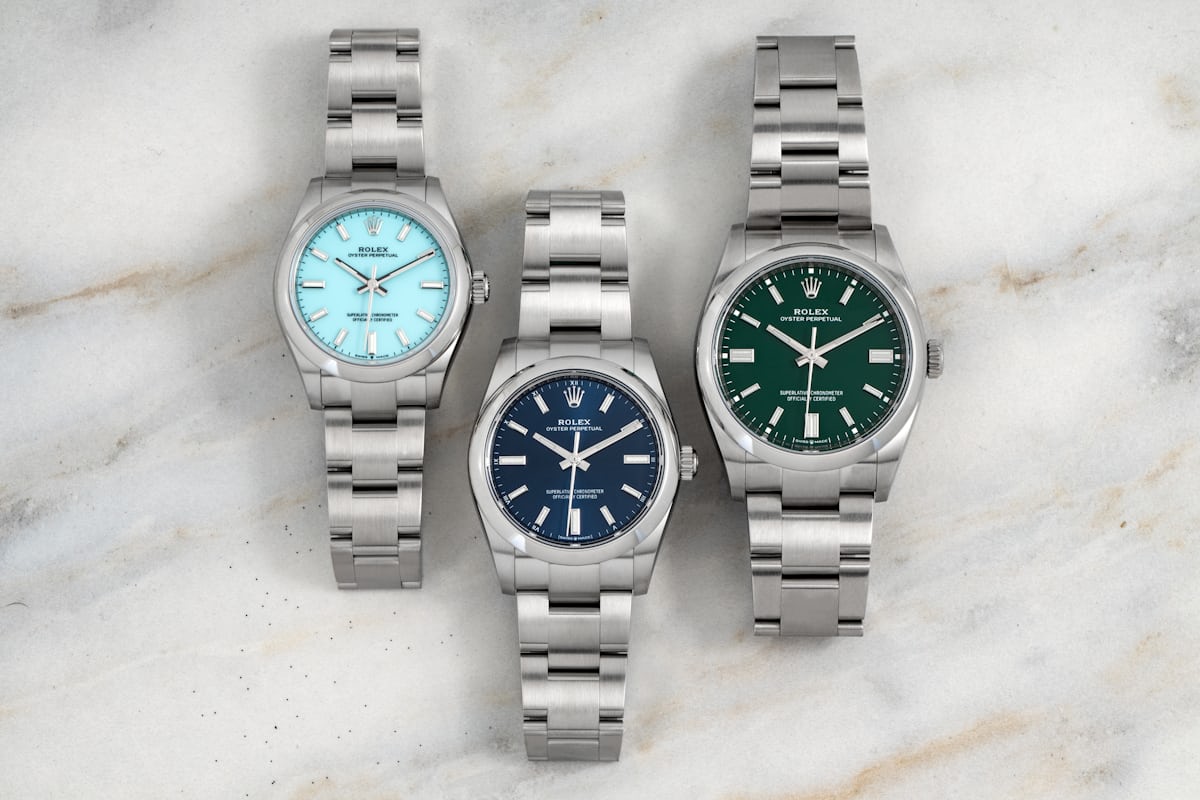
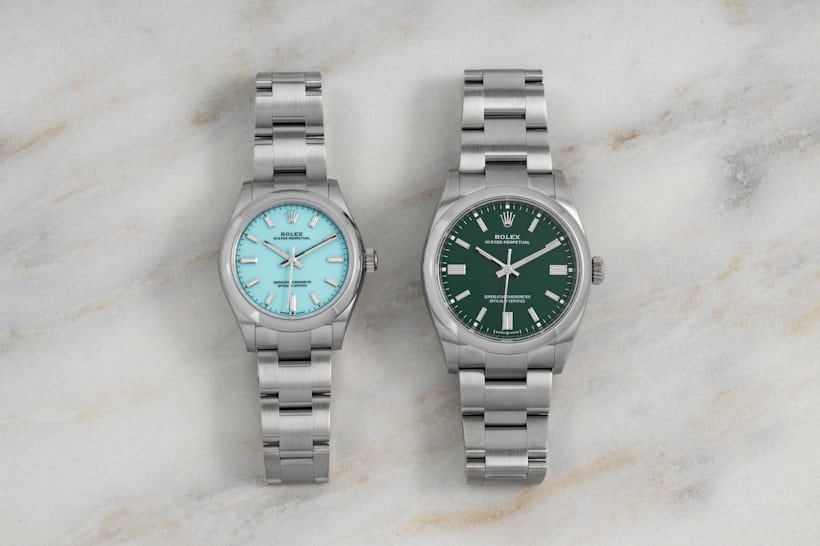

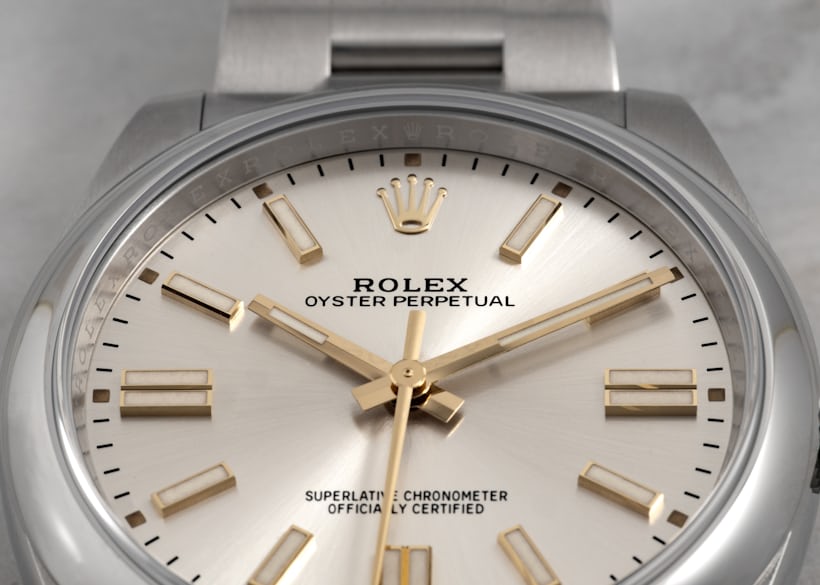

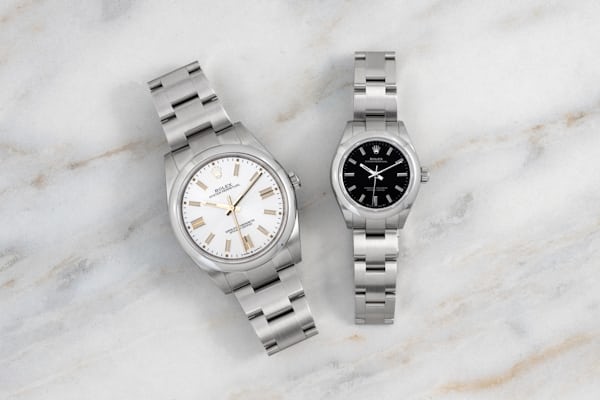
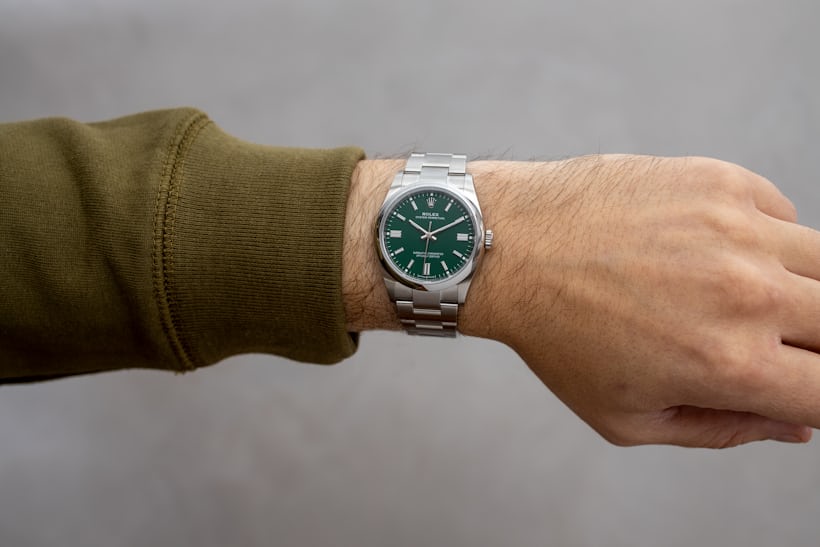
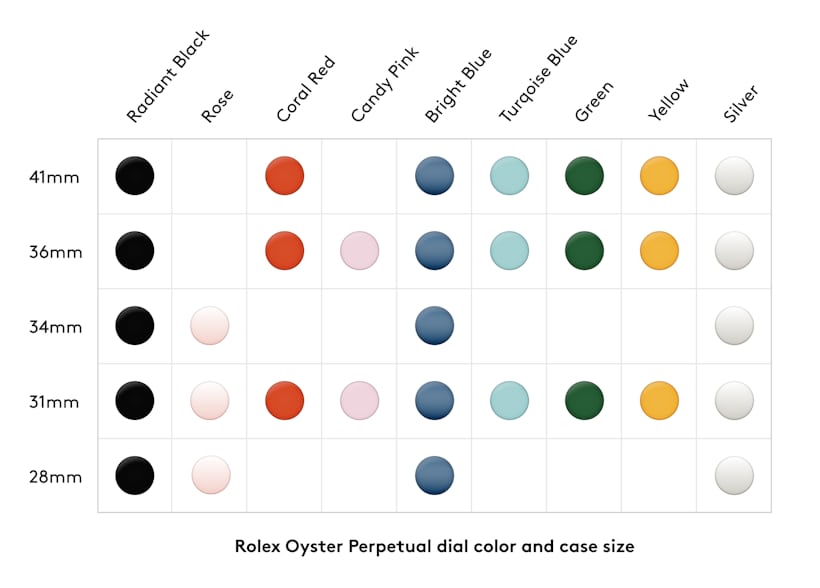
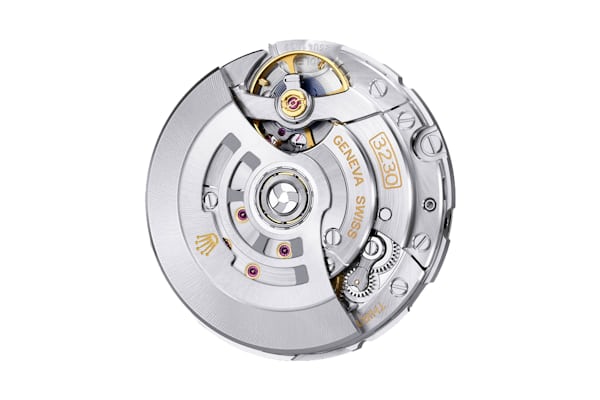 .
. 

